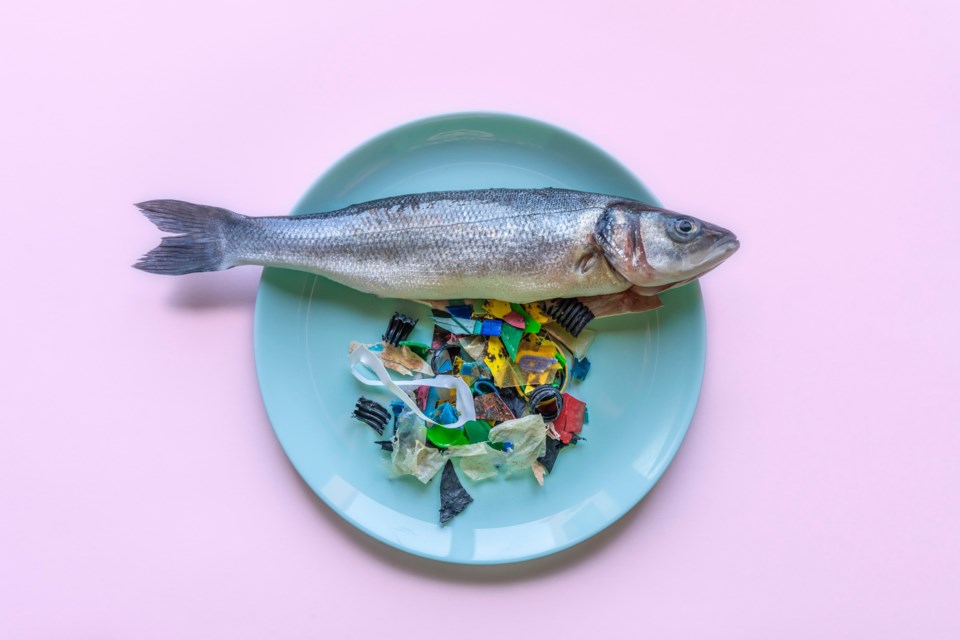Just because we can’t see something, doesn’t mean it’s not there.
Plastics are increasingly – and rightfully – demonized for their persistence in the natural world after their, often flippant, use. Microplastics and their sidekick chemicals are finding themselves in the headlines, and, it turns out, on our plates.
Plastic in the environment breaks down but doesn’t go away because no one wants to eat plastic, not even microorganisms. As a result, what doesn’t get recycled is guaranteed a long life, even if undetectable to the eye.
Once degraded into microplastics – pieces five millimetres or smaller – plastic can persist for centuries.
Plastics have other unpalatable characteristics, especially when one considers how closely they are found to our food these days. Toxic dyes and plasticizers are often incorporated into single-use food packaging and even refillable-plastic food containers.
To make plastic flexible and moldable, chemical plasticizers are added to the resin, the most popular of which is BPA (bisphenol-A), along with the lesser known ESBO (soy-based), and DEHA (a phthalate). These are all either known or speculated to contain hormone disruptors because they mimic human hormones, notably estrogen.
The effects of hormone disruption can include diabetes, infertility, sexual mutations, asthma, heart disease, obesity and poor infant brain development.
Food wrapped, transported or even temporarily contained in plastic is vulnerable to chemical exposure. Avoiding certain types of packaging can reduce risks. Stay away from plastics labelled 3 (PVC), from which cling wrap is made. Opt to use beeswax-infused cotton at home where possible instead.
Cut down on canned food as containers are lined with plastic which liquids are in direct contact with. Use glass containers for food storage – especially when it’s warm, fatty or acidic as these cause plasticizers to leach.
There has never been a better time to start bringing your own metal and glass to-go containers with you. Do not microwave plastic or pour hot liquids into plastic cups, as this may also cause chemical leaching.
So far, there is no holy grail replacement for the single-use plastics many have become reliant on for their food-on-the-go needs. Biodegradable plastics are capable of breaking into smaller pieces but not necessarily into the ecosystem as a source of food.
Regular plastic is by definition biodegradable. Even compostable plastics are dubious, as they are only designed to break down into food in a high heat composting facility. Robust items such as compostable plastic cutlery can take more than 100 days to fully compost, and the average facility cycle is approximately 28 days.
Microplastics are entering the food chain from the inside out. Chemically dosed plastics enter the water, soil and air from more than single use materials. Rubber from car tires and microfibres from synthetic clothing released from washing machines are two additional sources of note.
Once microplastics are in the water in particular, they are mistaken for food by marine life. A 2019 study revealed humans are consuming between 78,000 and 210,000 pieces of microplastics annually. Major sources of these are bottled water and seafood.
Let’s hope food labels in the future do not read: May contain plastic. Making informed choices about the food we eat may take a few more steps, but the protective benefits make it well worth the effort.
Let’s Talk Trash is contracted by qathet Regional District to deliver its waste reduction education program. For more information, email [email protected] or go to LetsTalkTrash.ca.




